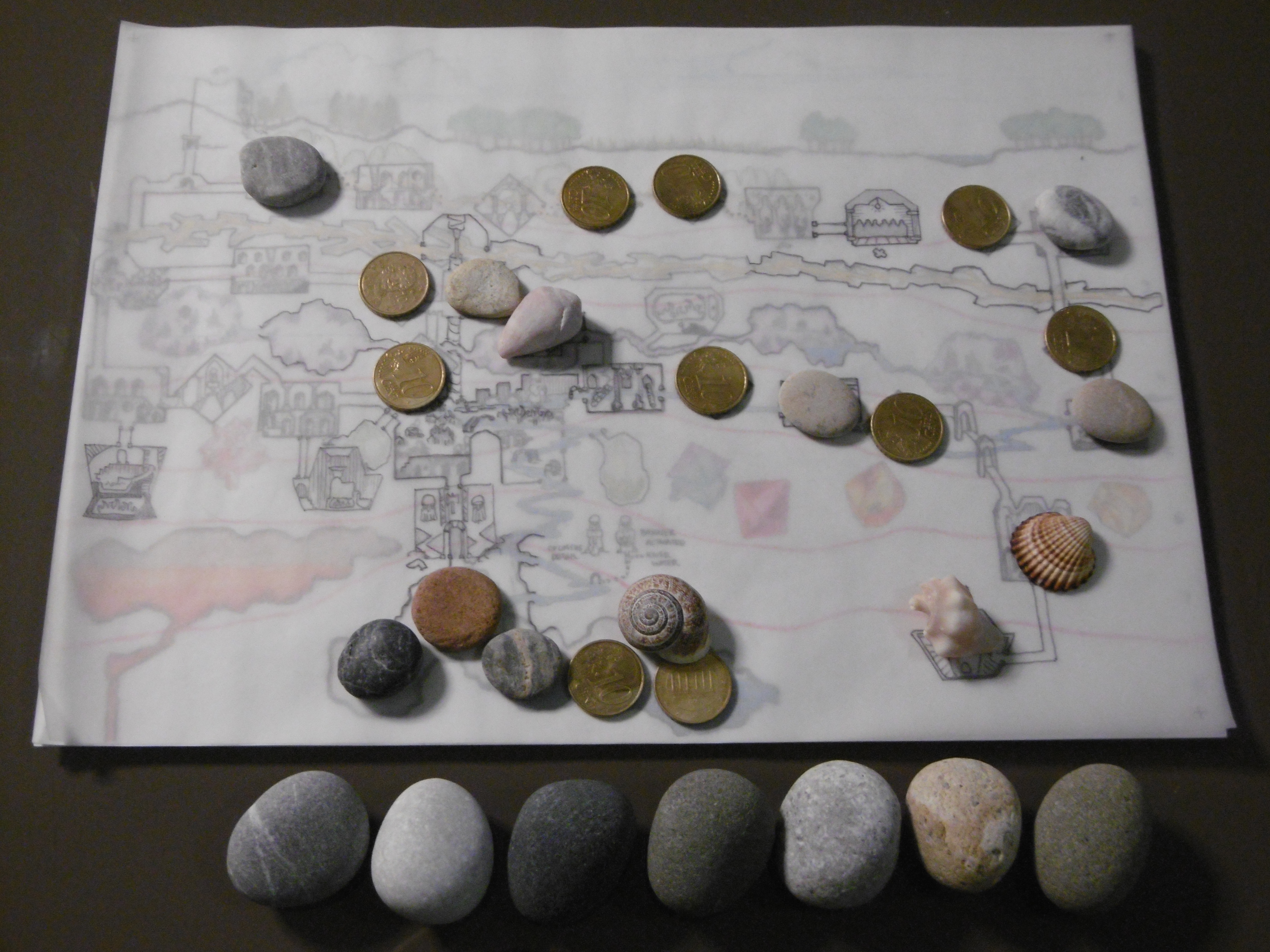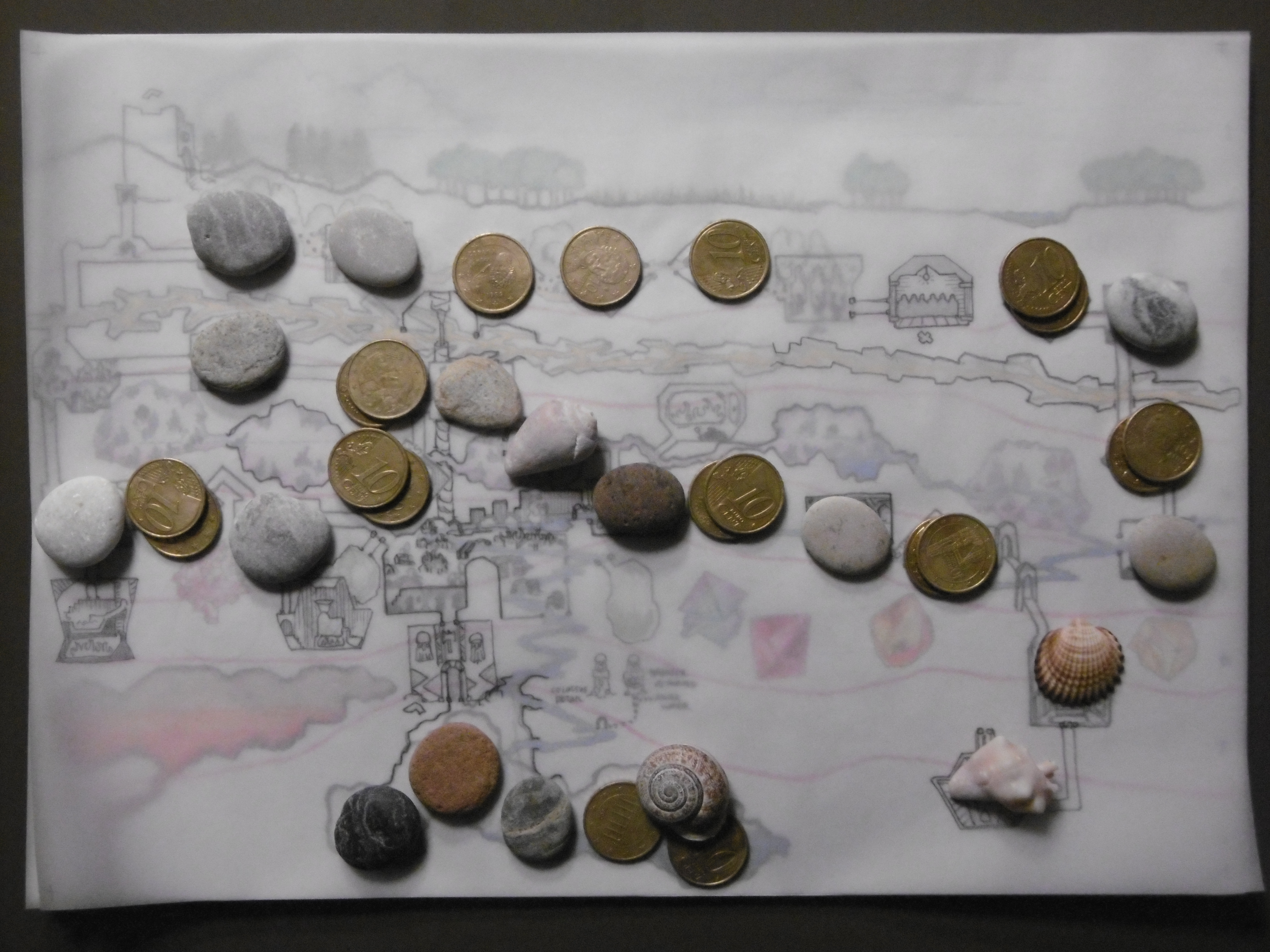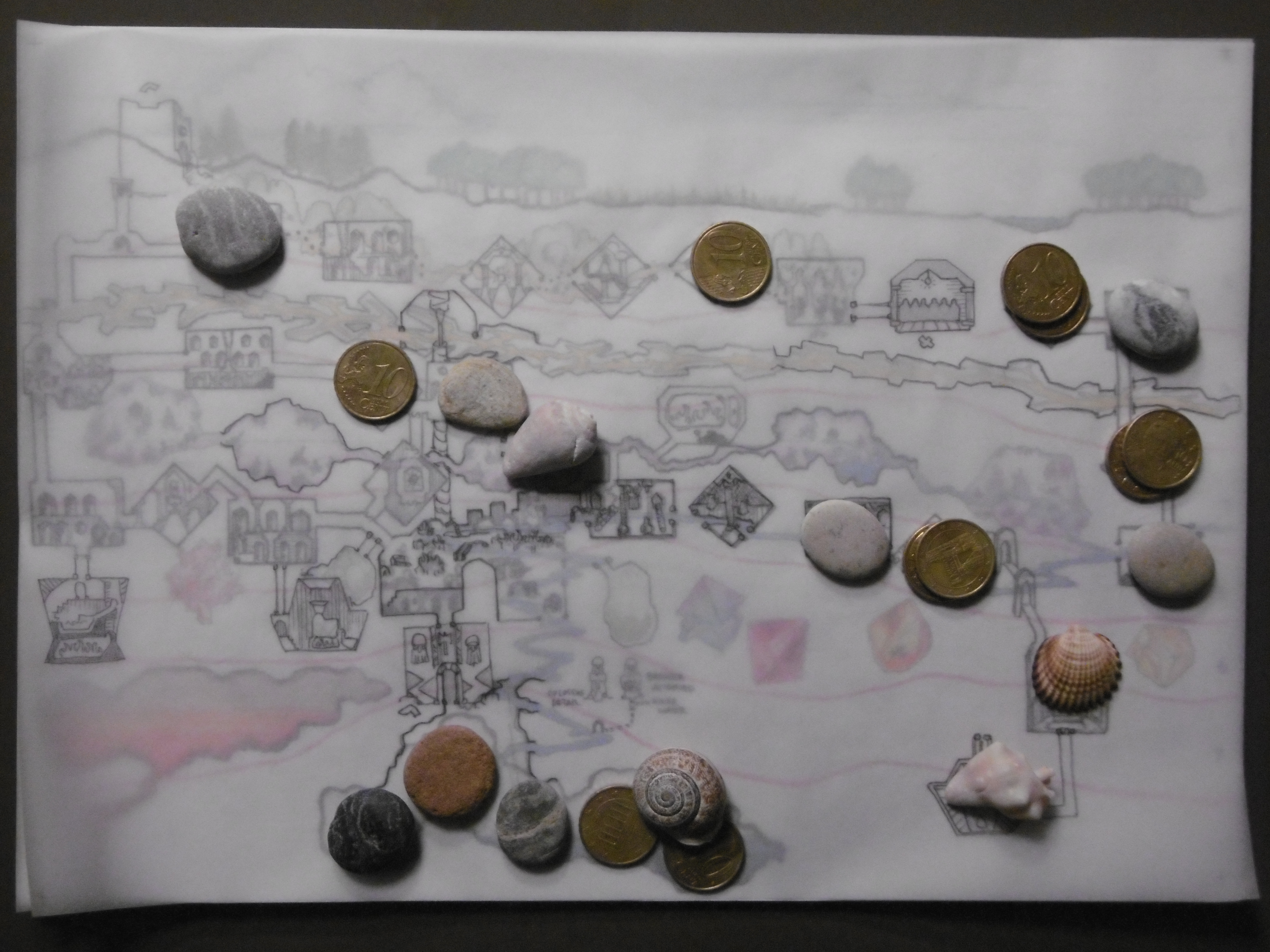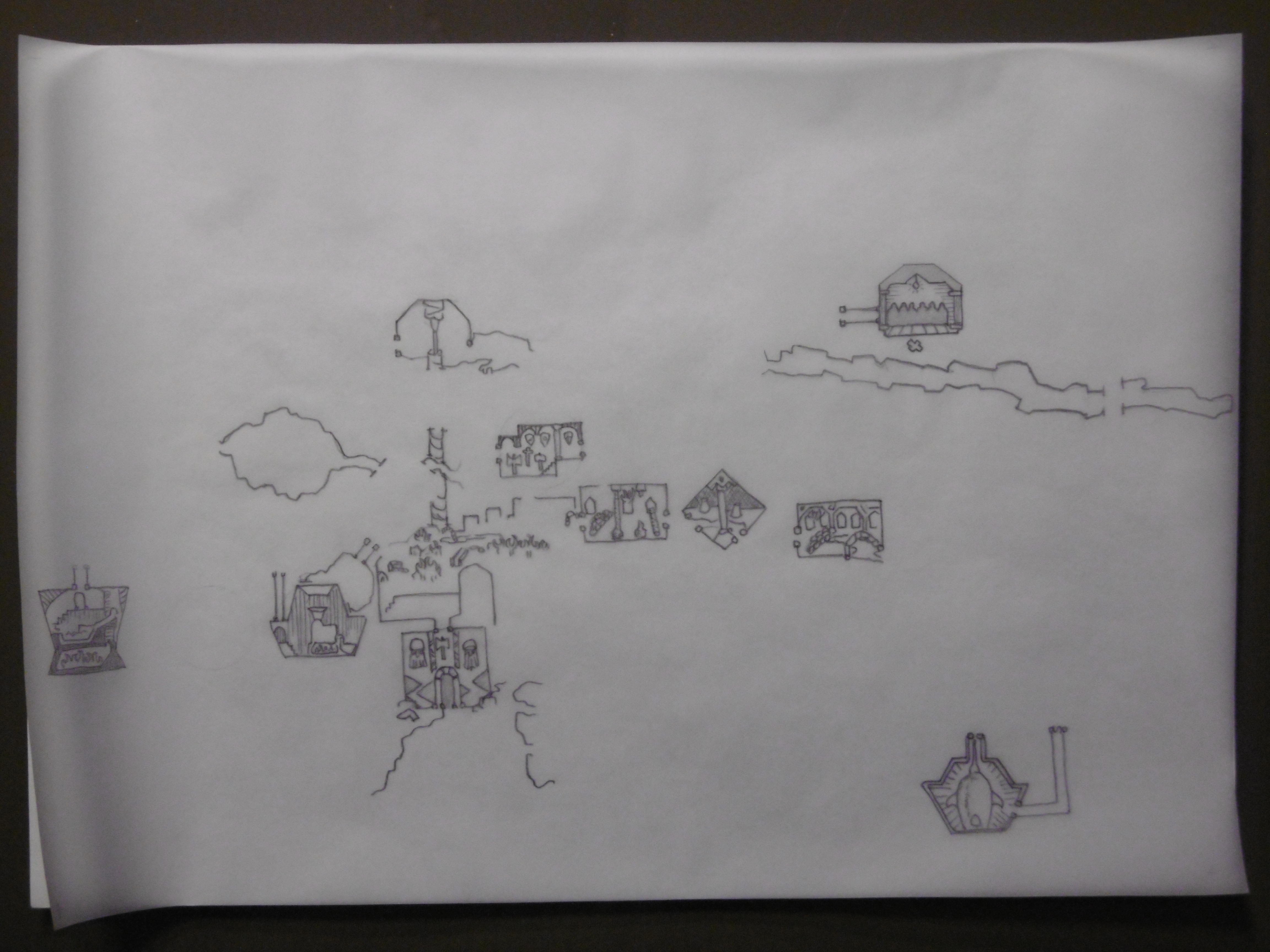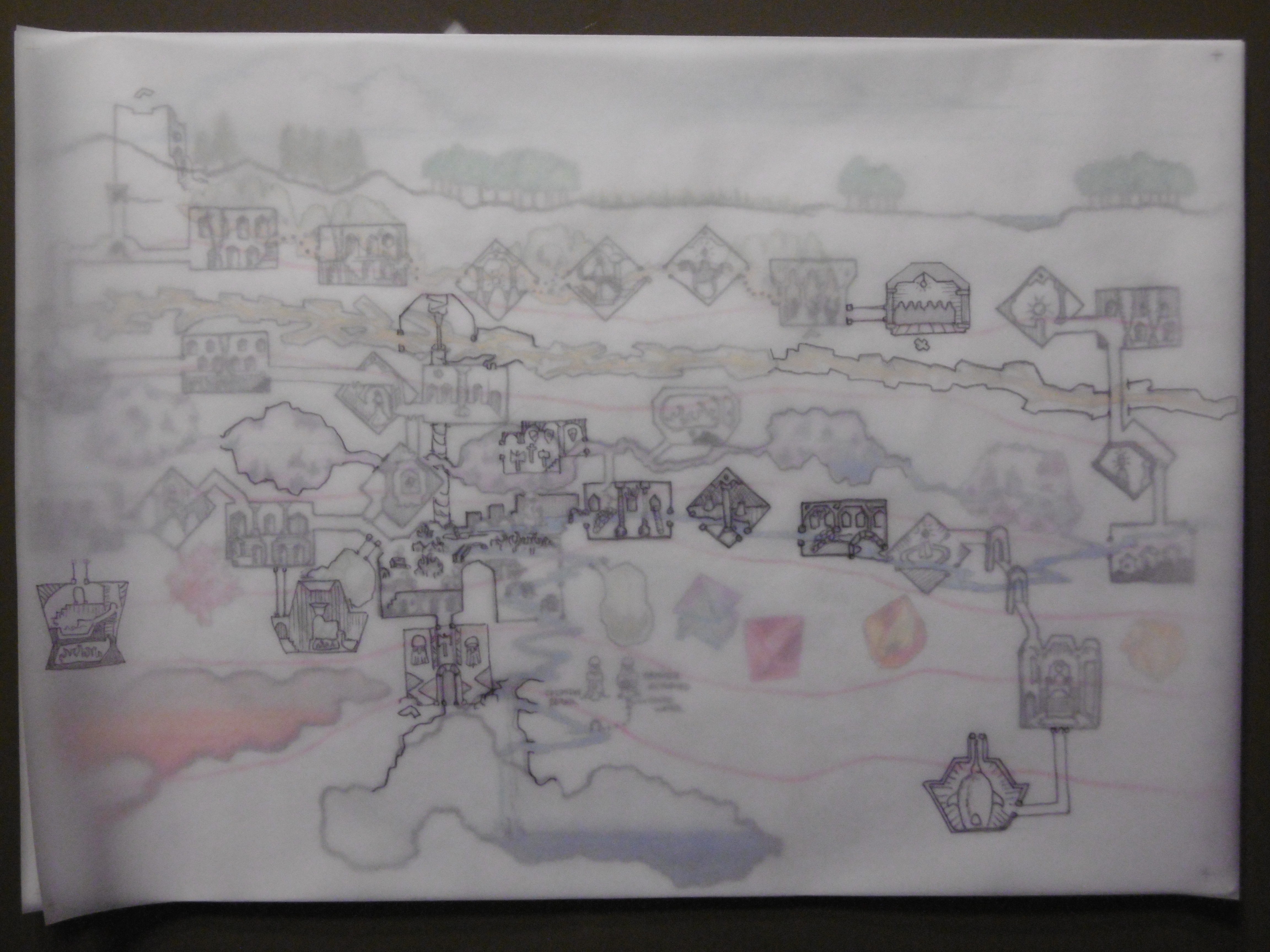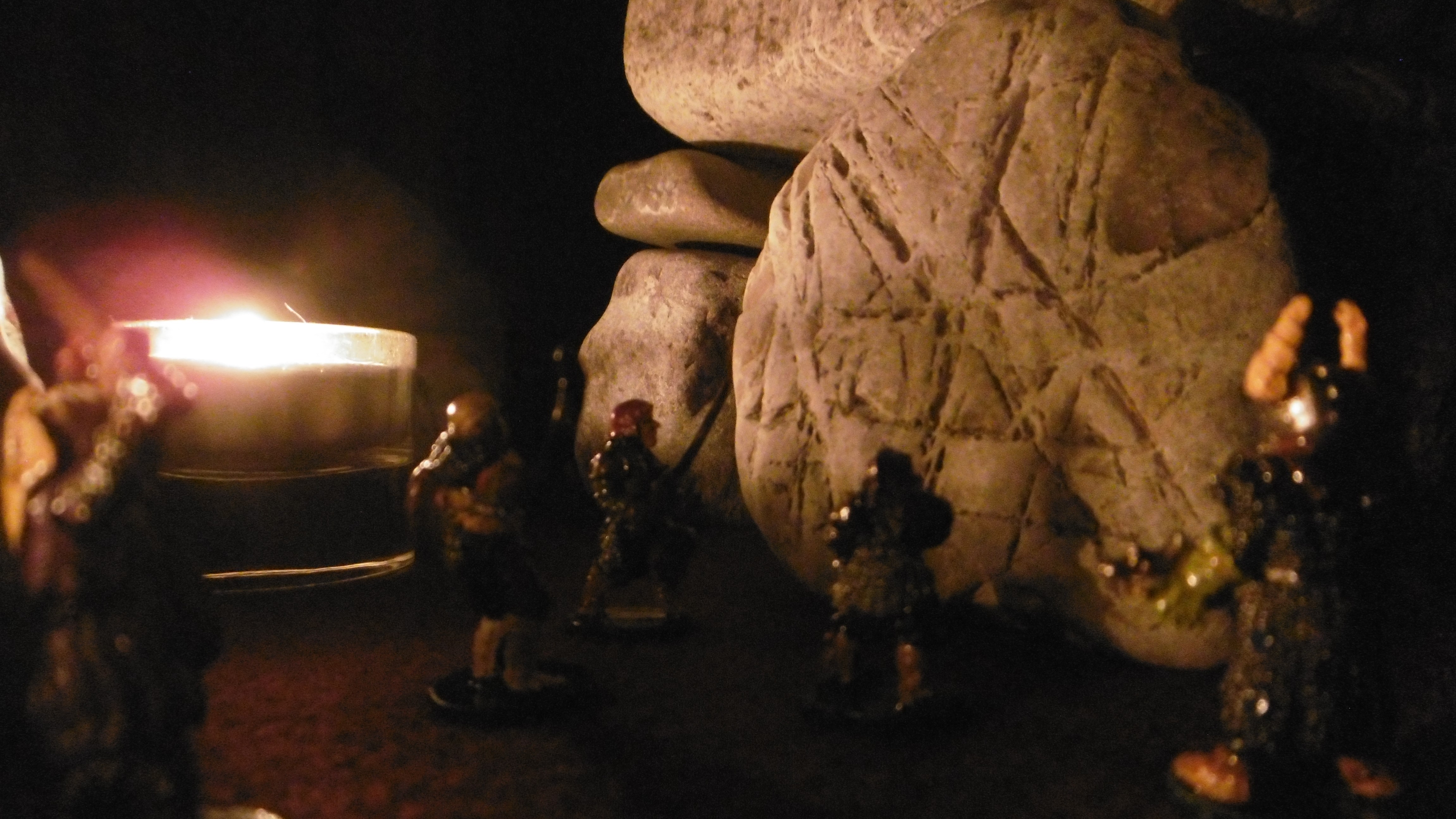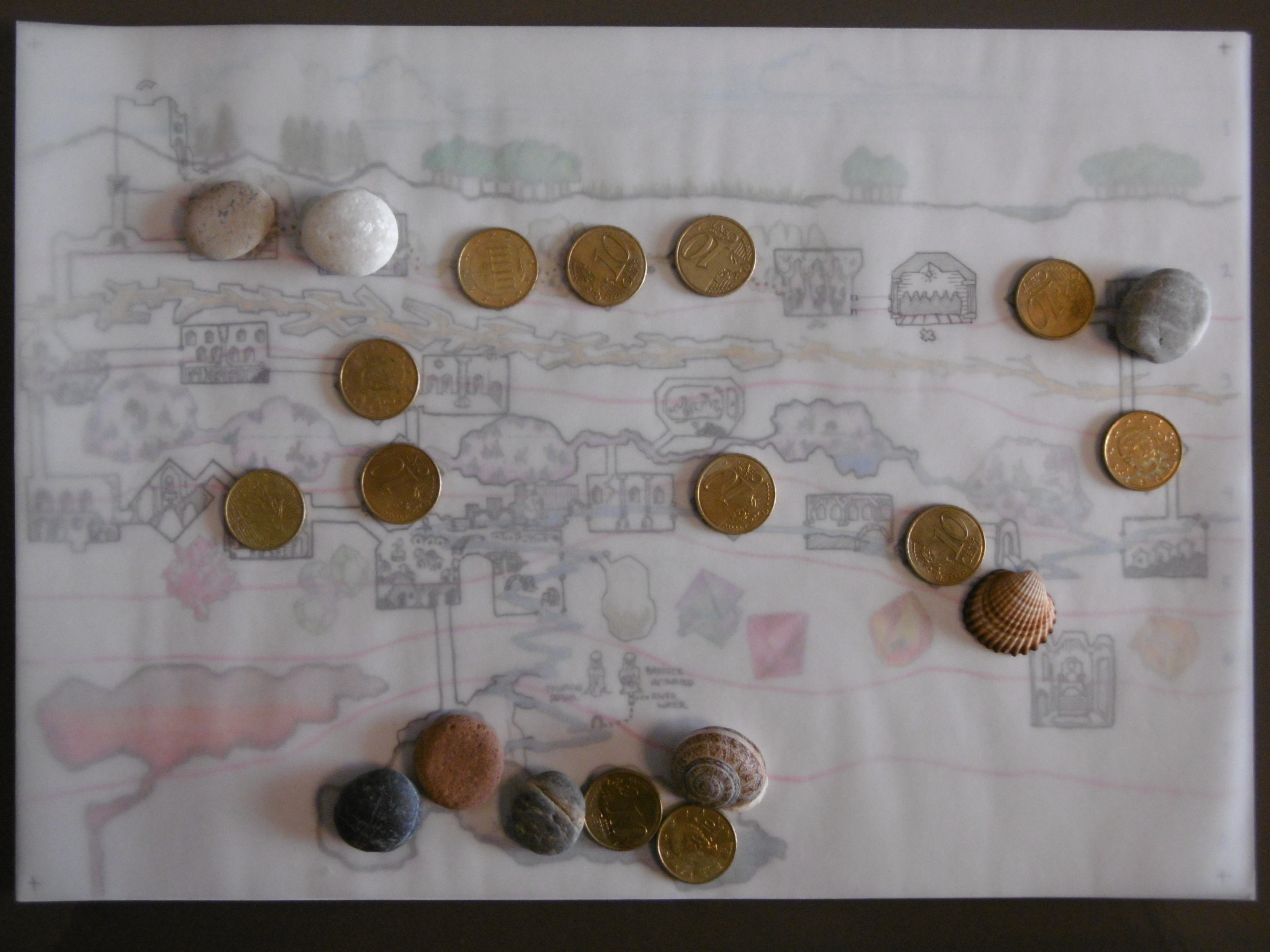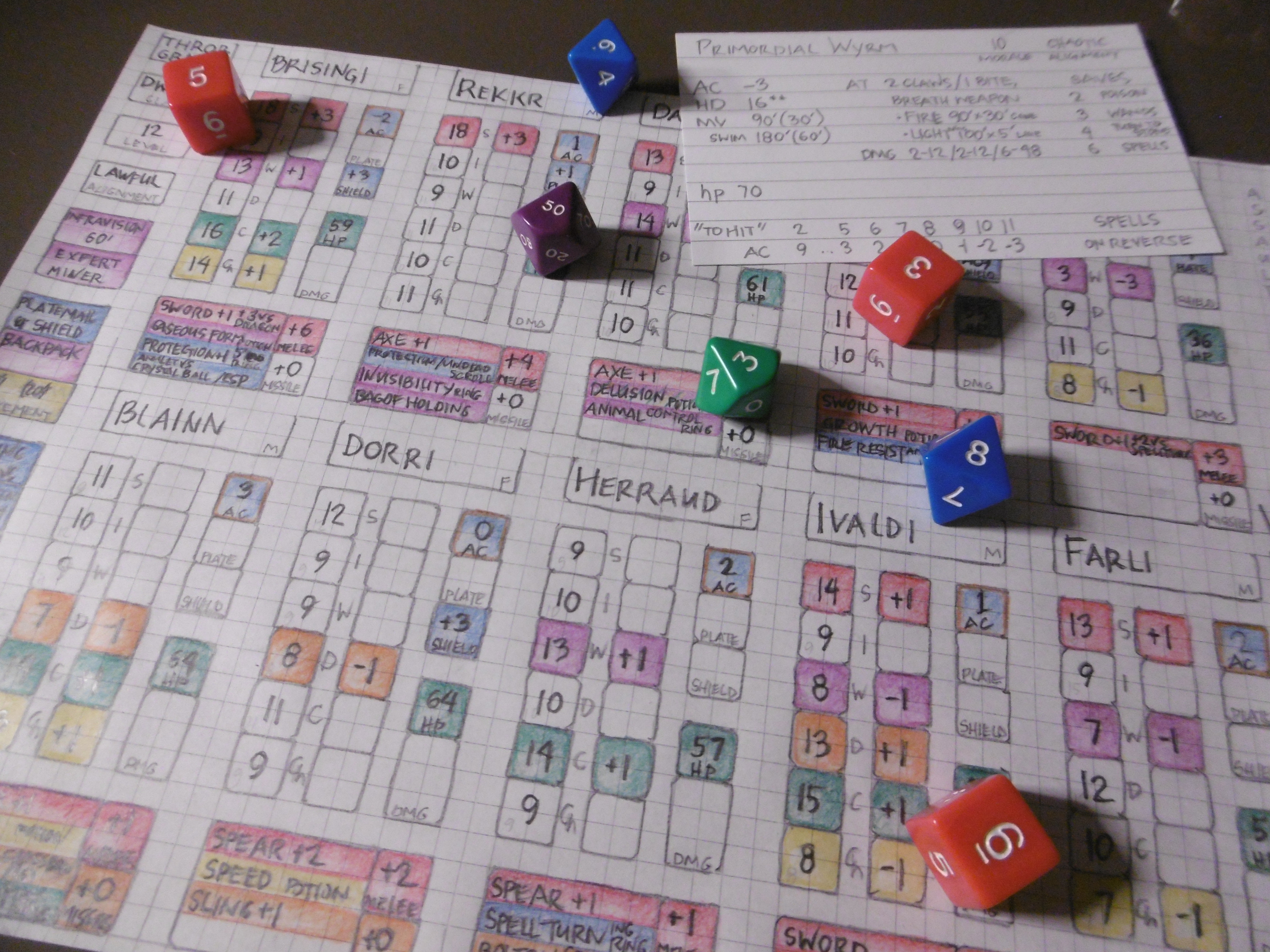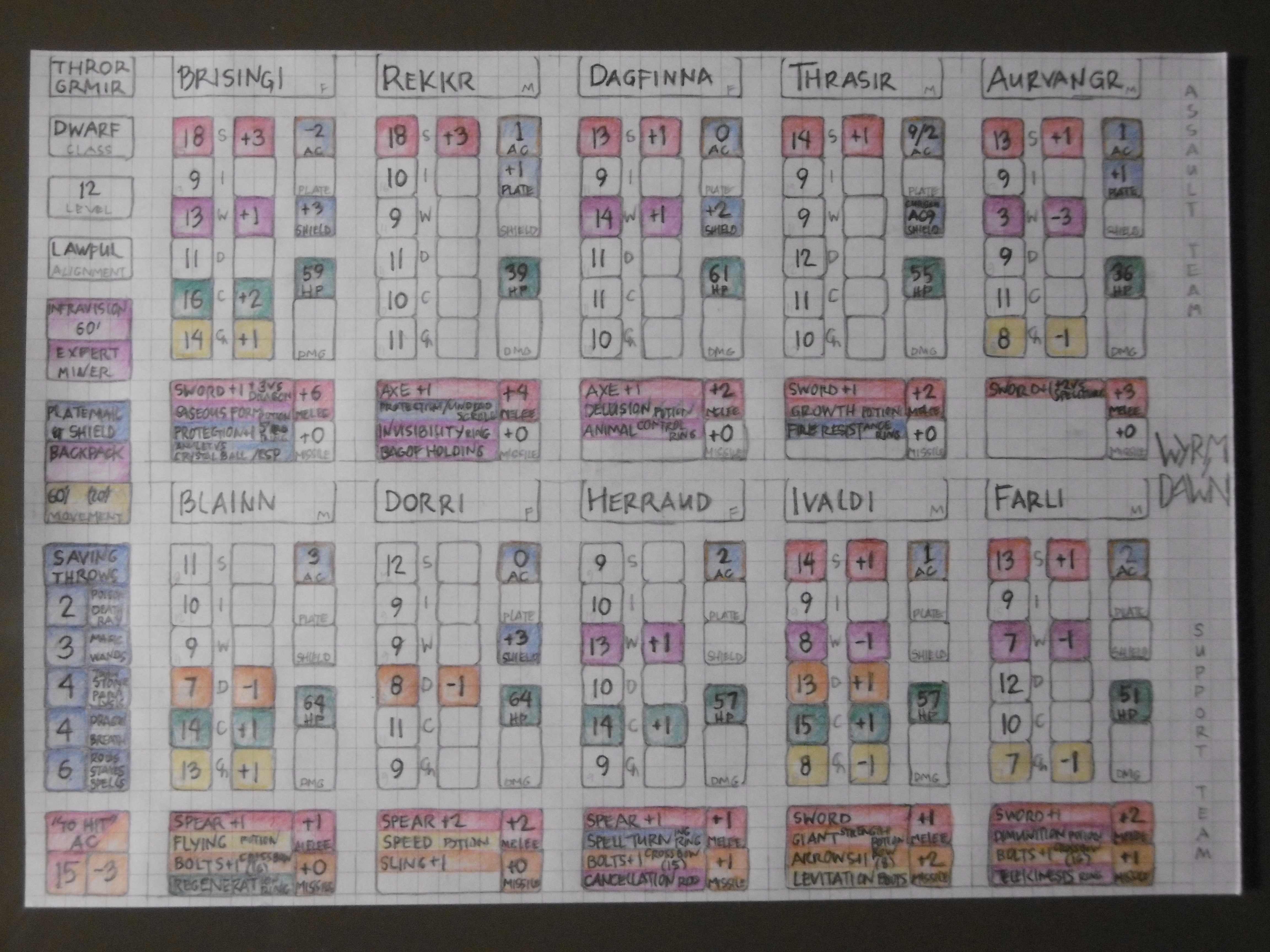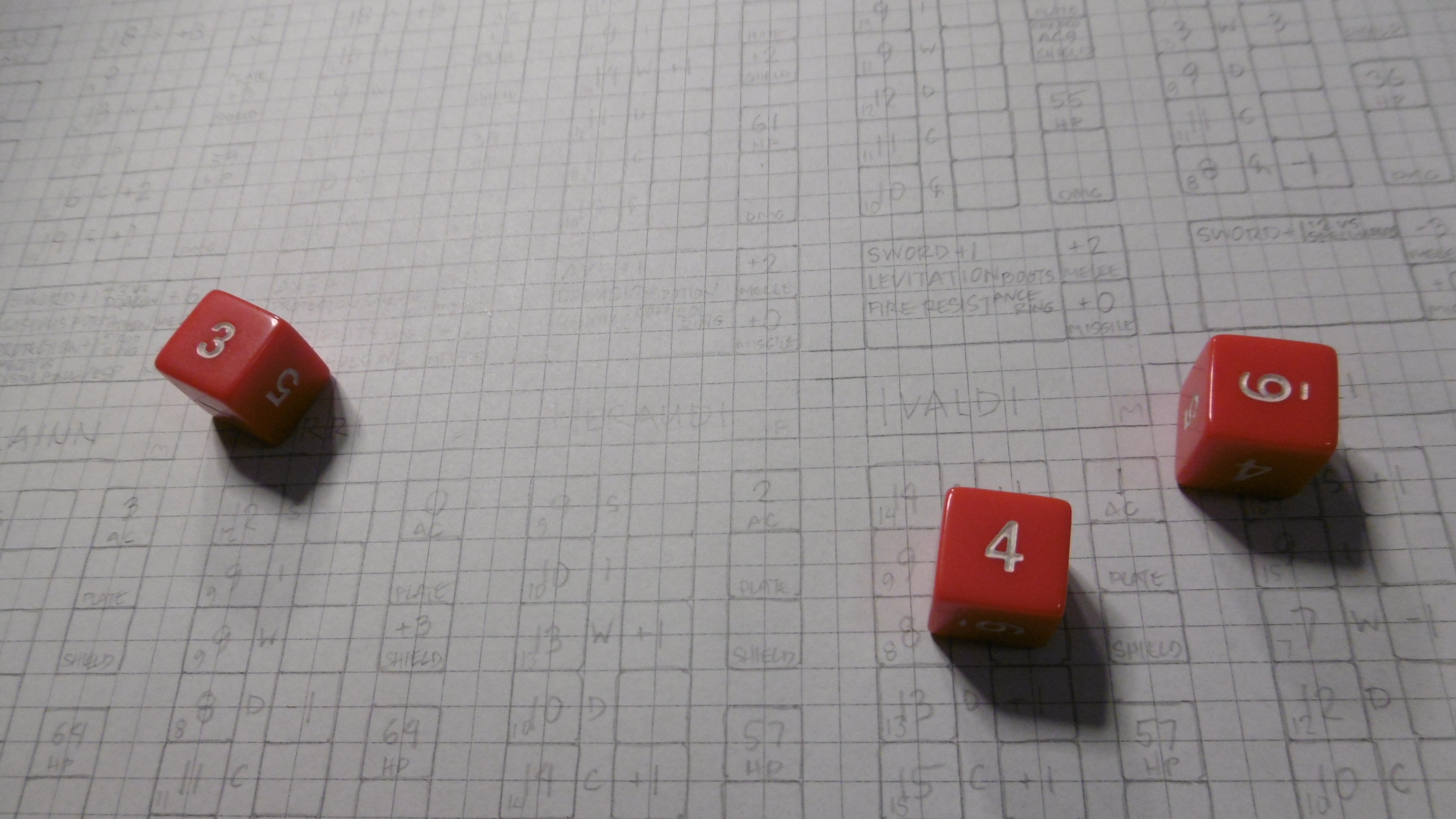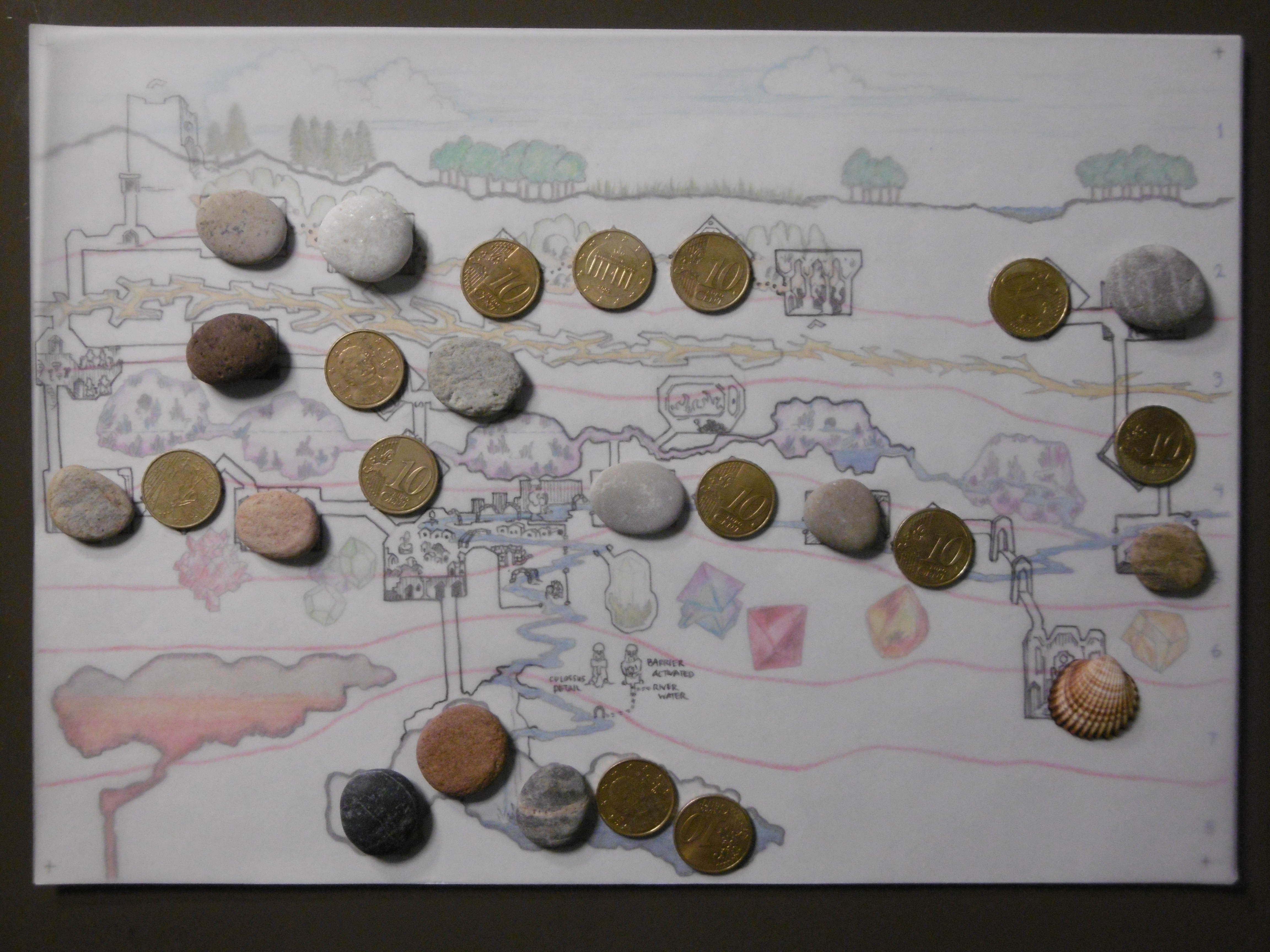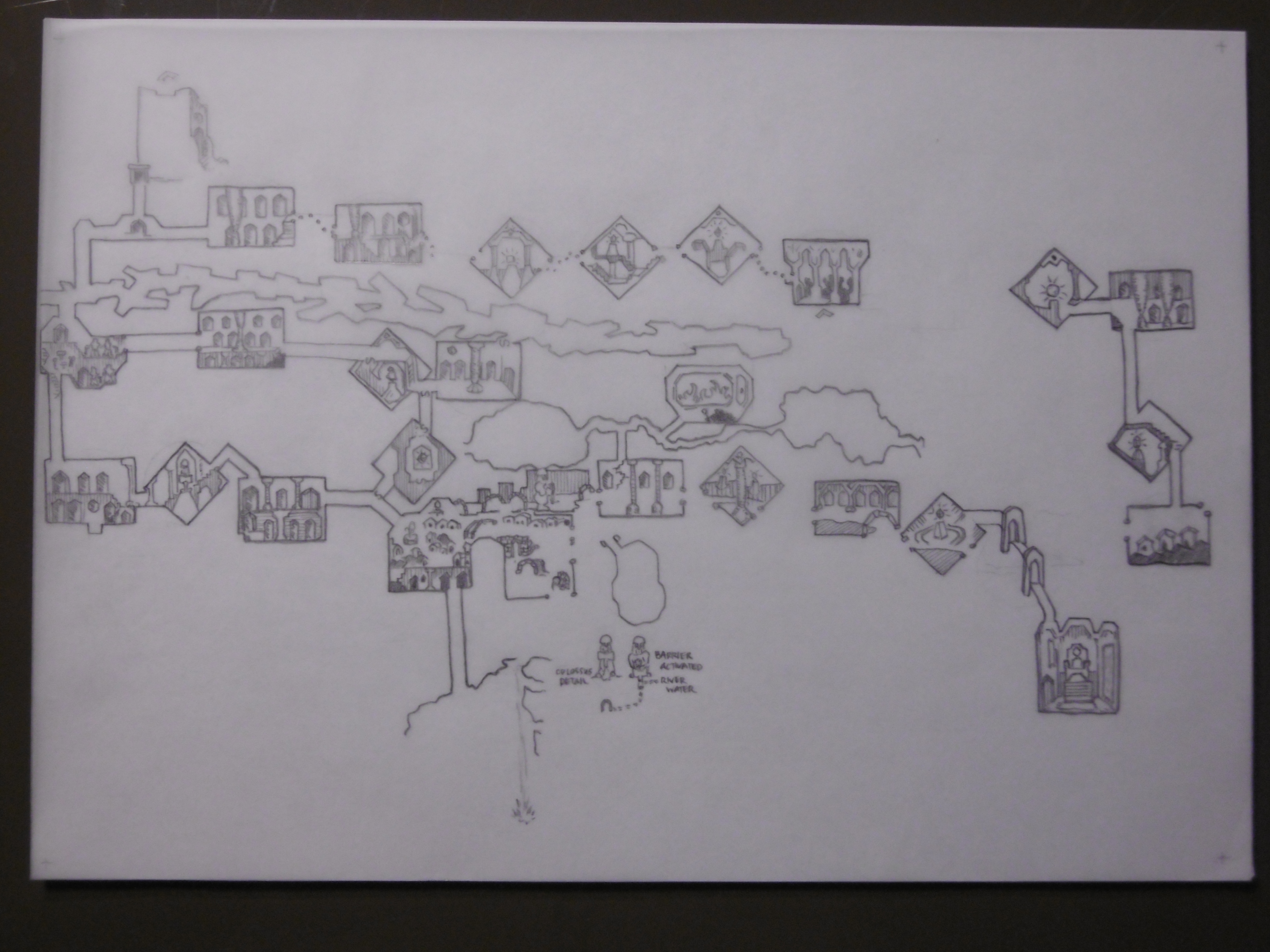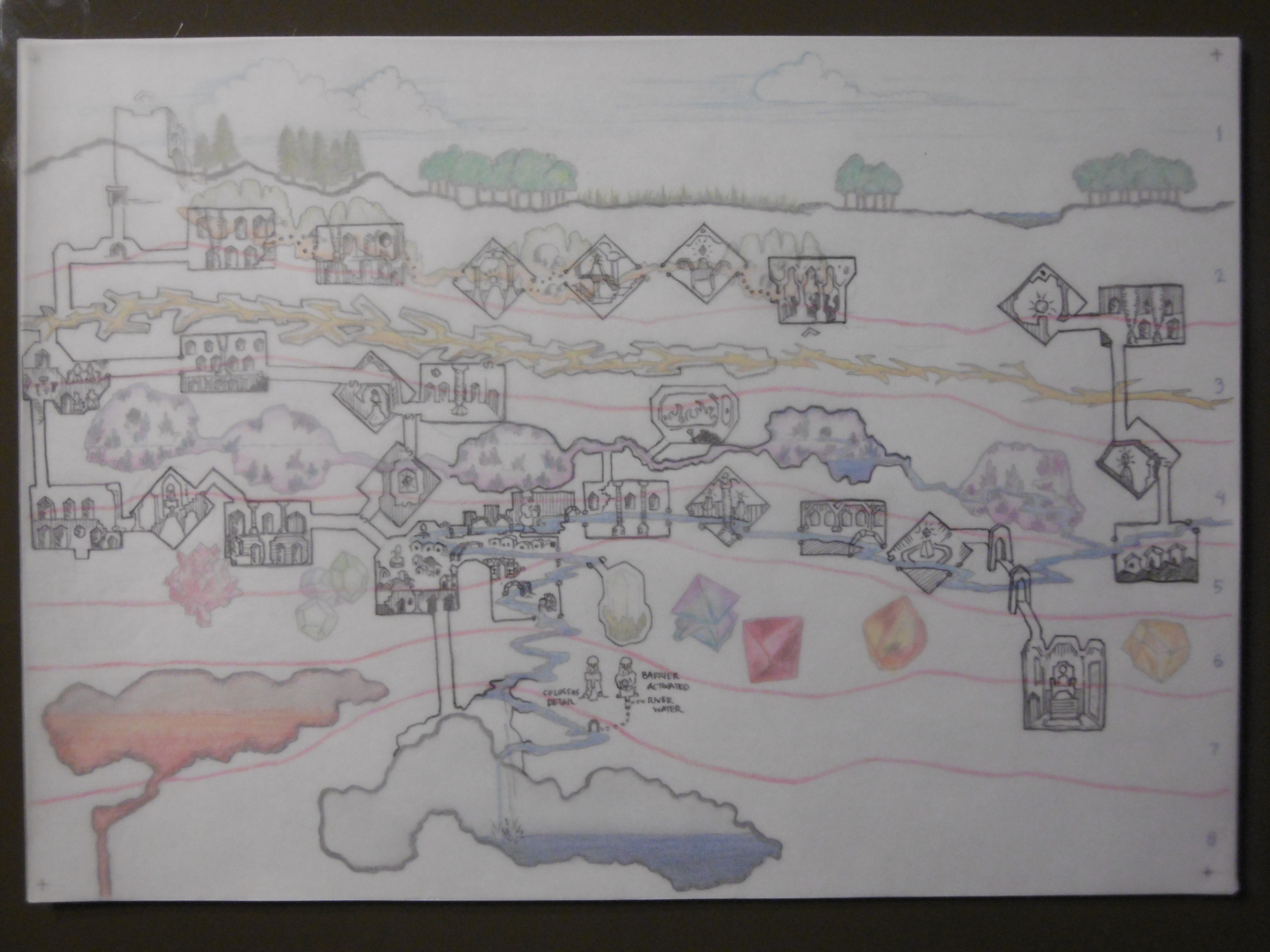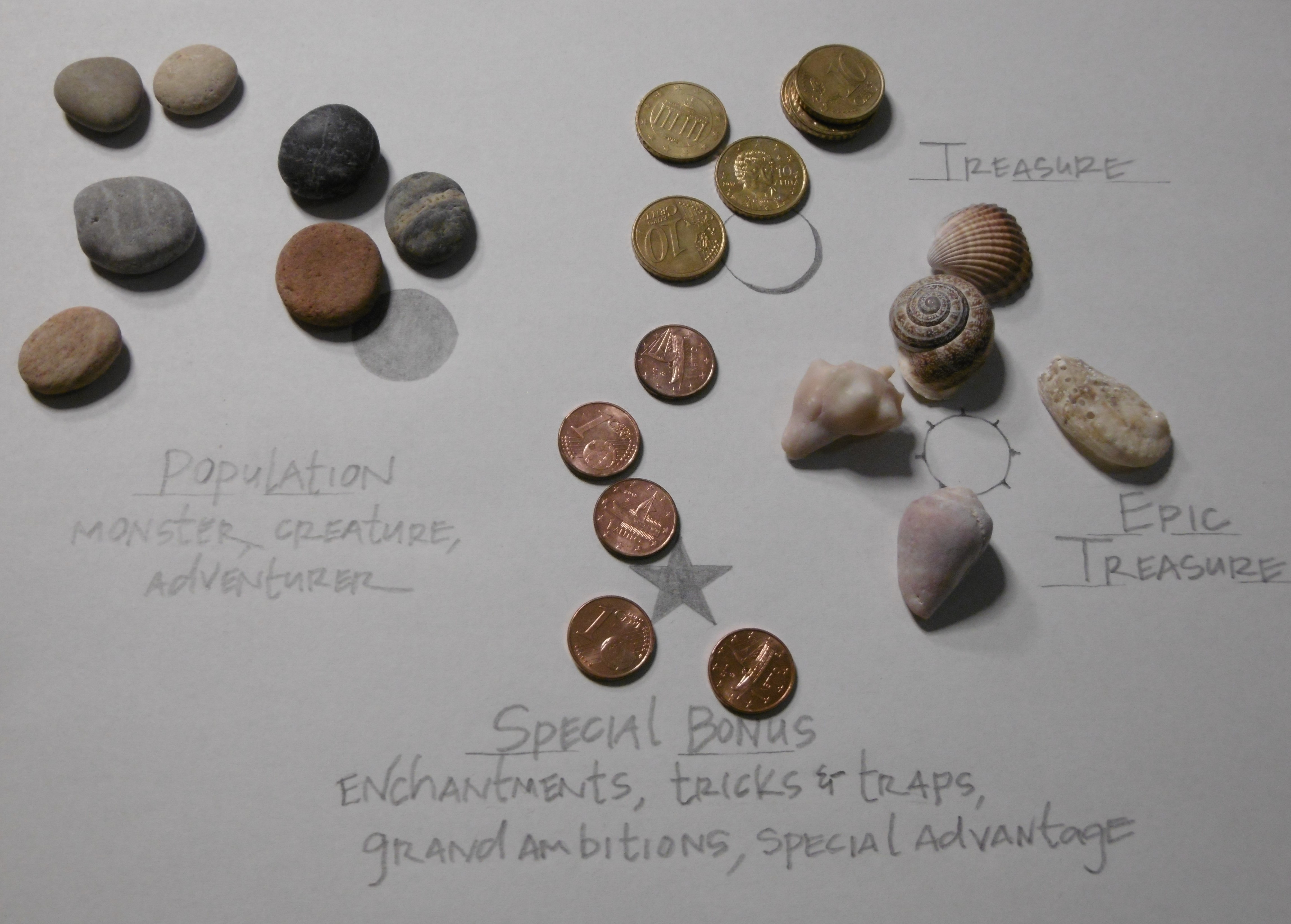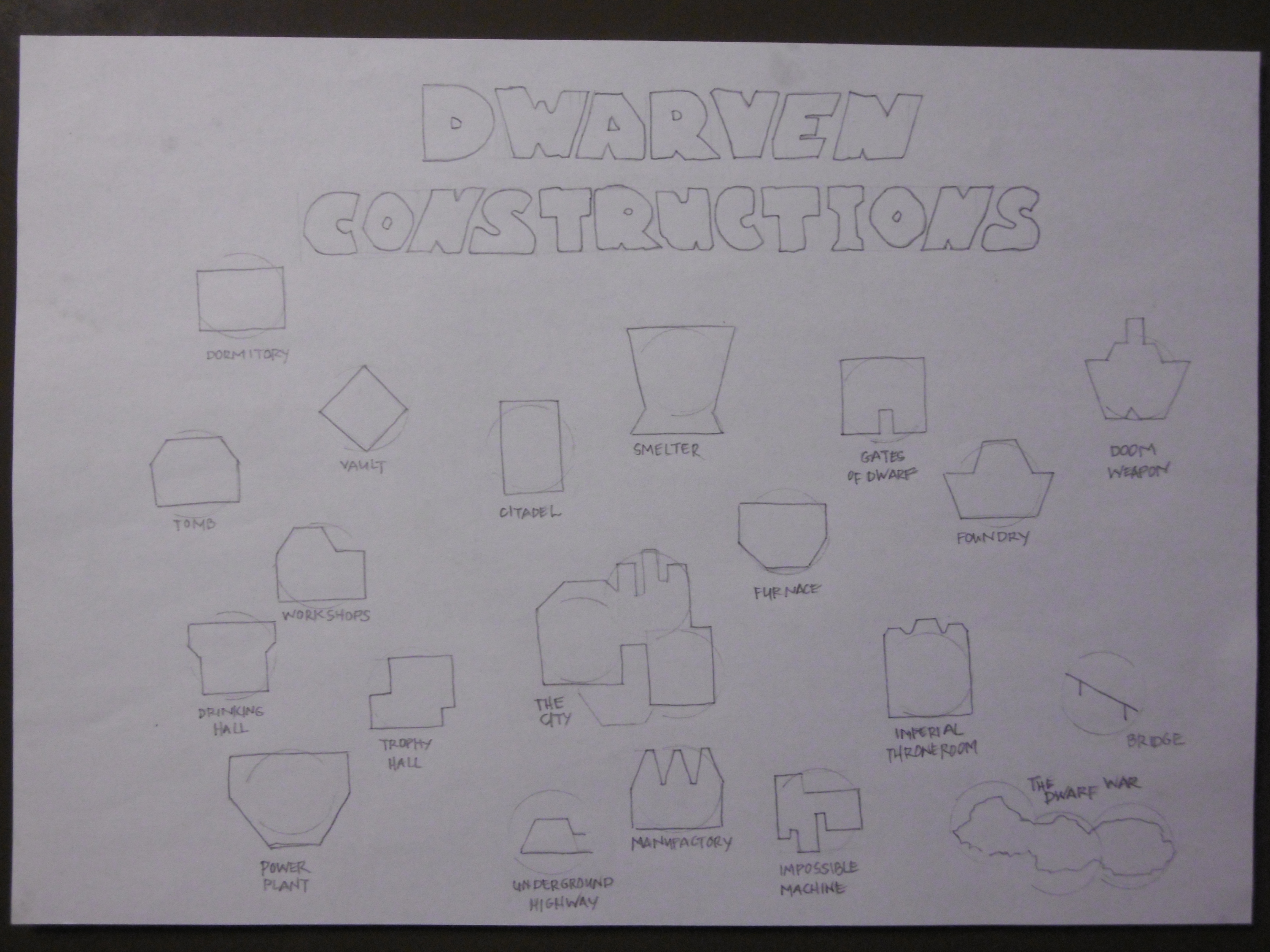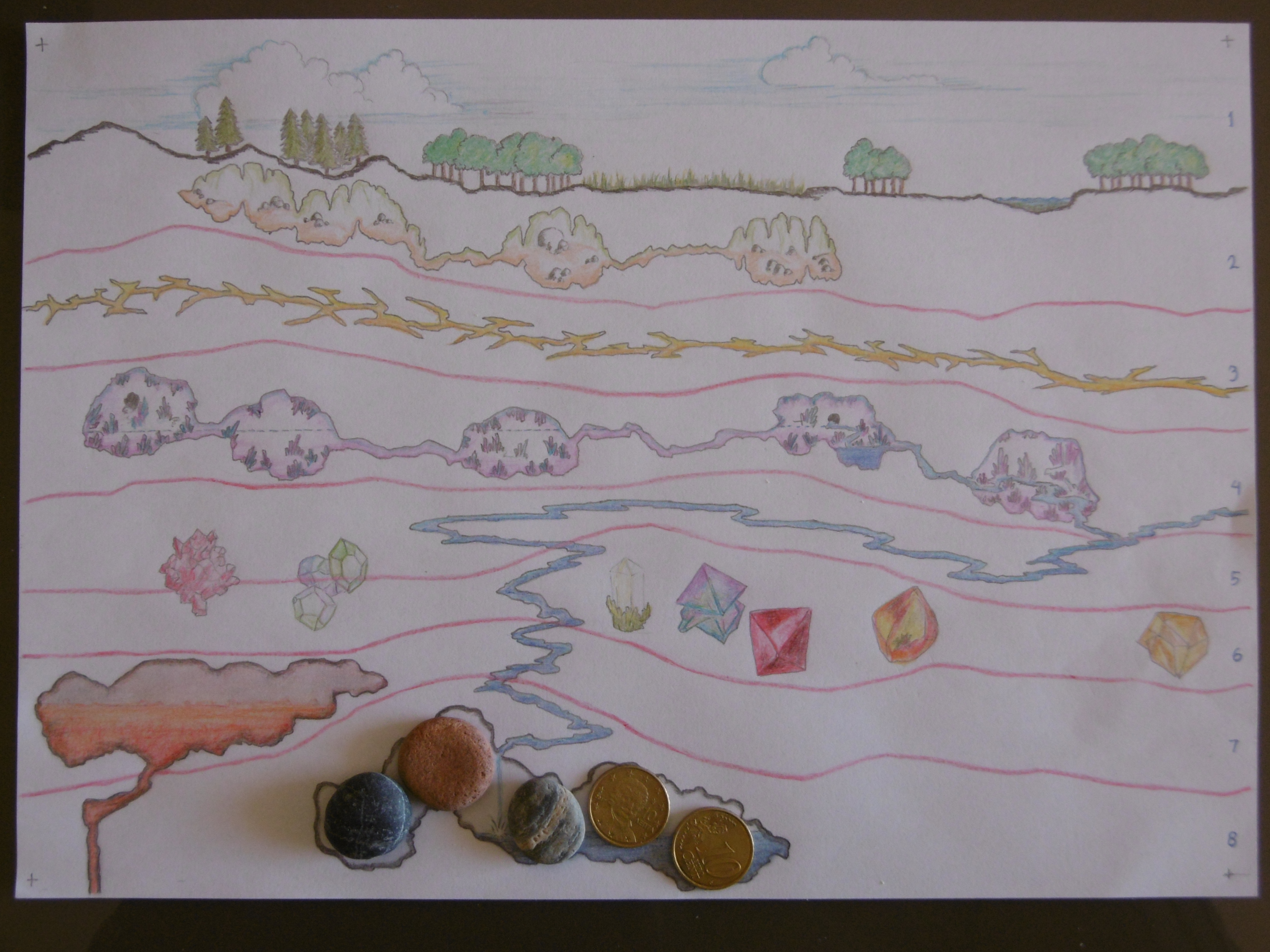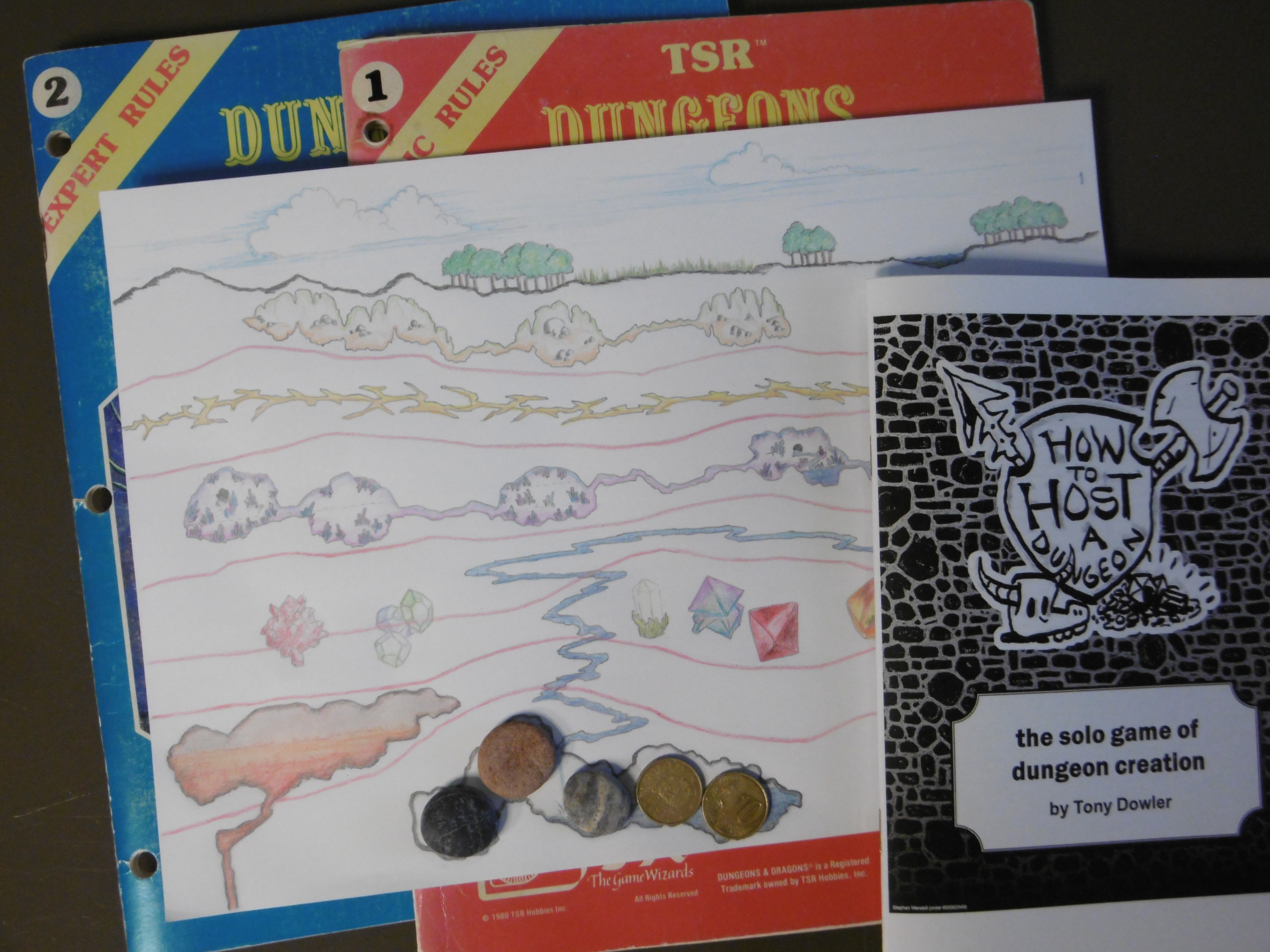Wyrmlings
Throrgrmir’s golden age ended when the dwarves woke the primordial wyrm. After the wyrm’s incursion, they rebuilt their civilization in a decadent age, which ended in civil war.
Meanwhile, the wyrm laid eggs. During Throrgrmir’s final era, the eggs hatch. While the dwarves struggle in the war’s aftermath, they must defend themselves against treasure-seeking wyrmlings.
Tinker & Tack
What’s fun about tinkering with rules in your own instance of a game is that they don’t have to work in every case. They only have to fulfill your present purpose. I tacked these additions on to the Age of Civilization. I present them here as an example of what you might do with your own game of How to Host a Dungeon.
Dwarves
When expanding and exploiting, dwarves prefer to move into dormitories and store treasures in vaults as far as possible from any active wyrmlings. They build, however, where they find space.
Wyrmlings
I name wyrmlings after the order in which they hatch, using the greek alphabet. From seven eggs, the wyrmlings are called Alpha, Beta, Gamma, Delta, Epsilon, Zeta, and Eta.
Following the dwarves’ building phase, the wyrmlings—all together—take their turn in phases as follows.
Incubation
Roll a d6 for each unhatched egg. For each 1 or 2, one egg hatches. Emerging wyrmlings immediately search for treasure.
Once hatched, a wyrmling may wake or search. Each of these actions may lead to subsequent actions, which are handled in the appropriate phase.
Wake
Roll a d6 for each sleeping wyrmling. The wyrmling wakes on a result of 1 to 4. Upon waking, it immediately searches for treasure.
Search
Wyrmlings seek gold and gems. As the offspring of primordial and cosmic parents, they have no affinity for epic treasures.
The wyrmling moves one finger toward the nearest dwarven treasure, excluding epic treasures. A wyrmling may move along waterways as well as tunnels.
If the wyrmling encounters a dwarven population, the conflict is resolved in the CONFLICT phase.
If the wyrmling encounters treasure, it returns immediately to the lair with the treasure, and its turn ends.
Conflict
When a wyrmling encounters a dwarven population, the conflict is resolved according to the rules for CONFLICTS AND ATTACKS in the Age of Monsters section, How to Host a Dungeon.
If multiple wyrmlings are in conflict with a population, they join forces and get a +1 bonus per additional wyrmling on the conflict roll.
The wyrmlings are young and, when outmatched, retreat back to the lair. Therefore, dwarves win all ties.
If the wyrmling wins the conflict, remove the dwarven population. The wyrmling’s turn ends.
If the dwarves win, the wyrmling retreats immediately back to the lair and sleeps.
The Wyrmling “She”
I don’t know yet if the offspring of the primordial wyrm and the World Dragon have a gender. Until we discover otherwise, I use feminine pronouns for the wyrmlings.
At the Gate
The dwarf gate blocks the tunnel from the Deepmost Caverns to the city of Throrgardr. Although no dwarven population is present, the dwarf gate is considered to be defended, unless occupied by wyrmlings. Defenders get the appropriate fortification bonus against attacks. From the gate, the dwarves also observe the waterway entrance.
A wyrmling at the gate may either attack the gate or sneak by it, swimming up the waterway. If more than one wyrmlings are present, they split into two even groups: some attack, others sneak. An odd wyrmling joins the attackers.
Multiple wyrmlings at the gate gain a +1 bonus for each additional wyrmling to the conflict roll if attacking, or if sneaking, gain a -1 bonus for each additional wyrmling at the gate. The bonuses apply to all wyrmlings, no matter in which activity they are engaged. One roll is made for each activity (attacking or sneaking) no matter how many wyrmlings are present. An example follows.
While a victorious wyrmling is at the gate, it is not defended. Dwarven defenders reinvest the gate at the beginning of their turn in which a wyrmling does not occupy the gate.
Attack
Attacking the gate is handled as a conflict, see CONFLICT above.
Sneak
Wyrmlings may attempt to get past the gate by swimming up the river. A 1 or 2 on a d6 indicates the dwarves do not detect the wyrmling. She immediately continues movement up the river. If the dwarves detect the wyrmling, she is repulsed and returns to the lair.
Example
Three wyrmlings are at the gate. Two attack, while the third attempts to sneak by. The two attackers get a roll with a +2 bonus, while the sneaker gets a roll with a -2 bonus.
The dwarves roll a 3. A +1 for fortification gives them 4 against the wyrmling attackers roll of 2, +2 for numbers, which is a 4. Dwarves win the tie. The defeated wyrmlings return to the lair and sleep.
The sneaker rolled a 3, which, with a -2 for numbers, is a 1—a success. The wyrmling continues her movement, following the river.
Sibling Conflict
When more than one wyrmlings find a treasure, they fight over it. Roll a d6 for each wyrmling. If the optional Wyrmling Hierarchy rule (below) is used, add a bonus according to the wrymling’s rank, if any. The elder (or ranking) wyrmling wins ties. Winner takes the treasure back to the lair. Loosers remain; their turn ends.
Wyrmling Hierarchy (optional)
I have the idea that it will be important to know the wyrmlings’ hierarchy in later ages of the How to Host a Dungeon campaign. I found it not too onerous to keep track of wins and loses between the wyrmlings in the manner described below.
It does, however, prove difficult to detail how it works. Feel free to fill in holes or come up with your own system. If you don’t use the wyrmling hierarchy, assume the wyrmlings are ranked in order from eldest to youngest, i.e., as they hatch.
When any number of wyrmlings fight, the winner, if she doesn’t have one already, earns a ranking. If she is lower ranked than an opponent, she may move up in the ranking.
In all cases, a loss is recorded for each looser.
No rank: If the winner has no rank and she has an equal or fewer number of loses than her highest ranking opponent, she assumes the rank of that opponent.
Higher rank: If the winner is ranked higher than her opponents, she maintains her current rank.
Lower rank: If the winner is ranked lower than her highest ranking opponent and she has fewer loses than that opponent, she assumes that rank. Otherwise, she climbs in rank until she has fewer loses than the wyrmling whose rank she assumes.
Slipping rank: When a wyrmling’s rank is assumed by another, she slips down in the ranking. Compare the loses with the next lower ranked wyrmling. The wyrmling with fewer loses gets the higher ranking.
Empty Nest
If all the eggs hatch during this age, the primordial wyrm sleeps. Beginning on the next turn, she might wake up. In the WAKE phase, roll a d6. She wakes on a 1, and attacks the dwarf gate (with any wyrmlings present) in the CONFLICT phase, adding 1 to the conflict roll for each of her populations. She begins with 3 populations.
If the attack is unsuccessful, any wyrmlings return to the lair, and the primordial wyrm loses 1 population (return 1 token to the Deepmost Caverns). The primordial wyrm remains to press the attack in the next turn.
She continues the attack until she is successful or all her population tokens are returned to the Deepmost Caverns, at which time, she returns to the lair and sleeps. Check each turn for waking.
If the attack is successful, she occupies the gate, and her turn ends. The next turn, she moves into the city and makes a new lair there. While the primordial wyrm lairs in the city, dwarves may not reinvest the gate.
The wyrm sleeps and does not wake unless disturbed. Returning wyrmlings deposit their treasures and sleep in this new lair.
Unhatched Eggs
At the end of the Throrgrmir civilization, any unhatched eggs become epic treasures. In a later age, or in the later campaign, a wyrmling might be coaxed from an egg through an arcane ritual.
Civilization Ends
If civilization ends by industrial accident or other catastrophe, roll a d6 for any wyrmling above the dwarf gate and not in the lair—the primordial wyrm is impervious to the damage, and she protects her young. On a 1 the wyrmling does not survive the catastrophe.
If the dwarven population is reduced to five or fewer populations, the remaining dwarves depart, taking treasure (but not epic treasure) with them, and the Throrgrmir civilization ends. If she isn’t there already, the primordial wyrm moves, with her hoard and any unhatched eggs, into the city.
Active wyrmlings return to the current lair and sleep. Otherwise, follow the rules for the dwarven End of Civilization, How to Host a Dungeon.
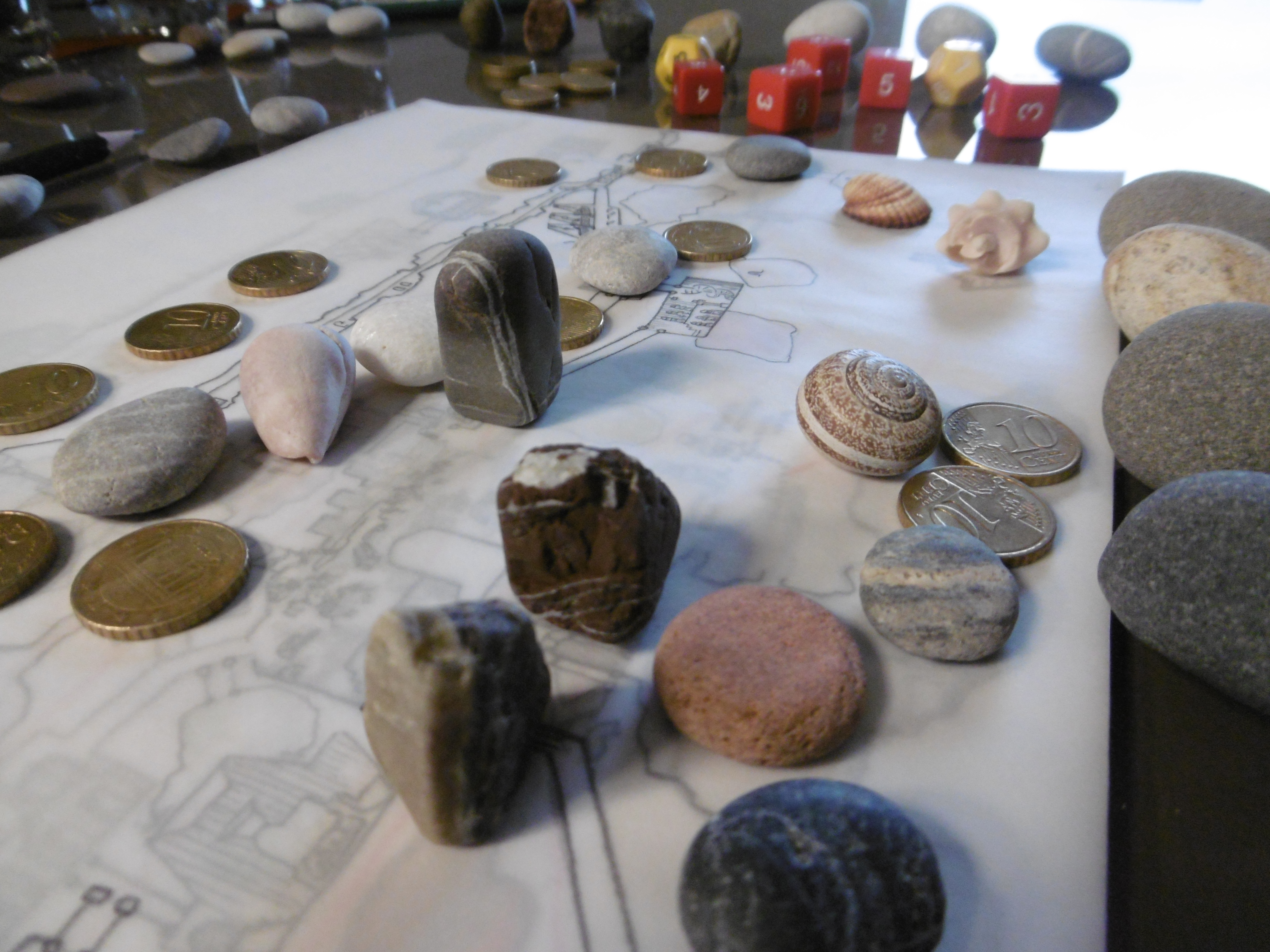
At the gate (center), Alpha attacks, while Gamma attempts to sneak up the river. Having previously penetrated the gate, Beta (background) engages a dwarven population. Four eggs remain in incubation (right).
How to Host a Dungeon is a tinker-friendly solo game of dungeon creation by Tony Dowler. In Wyrm Dawn, I’m using it to create back story for an upcoming B/X campaign. The game is available on DriveThruRPG, and you can support Tony Dowler’s work on his Patreon.
